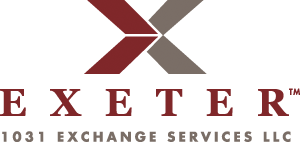Holding Guidelines for 1031 Exchange Properties
While the Department of the Treasury Regulations and numerous rulings make it very clear that you must have the intent to hold your 1031 Exchange property for rental, investment or use in your trade or business, they fail to define exactly how long or over what period of time you need to hold your relinquished properties or replacement properties in order to qualify for a 1031 Exchange pursuant to Section 1031 of the Internal Revenue Code or Section 1.1031 of the Treasury Regulations.
Property Purchased Just Prior to 1031 Exchange
The Internal Revenue Service has routinely taken the position if you purchased your relinquished property just prior to your 1031 Exchange transaction that you have actually purchased and are holding the property for sale (inventory) rather than holding it for rental or investment. Furthermore, the Internal Revenue Service has also taken the position that if the replacement property is sold immediately after your 1031 Exchange transaction is completed then it was not held for a sufficient period of time to qualify for 1031 Exchange treatment.
Little Definitive Authority on Holding Period
While there is no actual holding rules or regulations and very little definitive authority on a holding period, in one private letter ruling the Internal Revenue Service has stated that a minimum holding period of two (2) years would be sufficient to meet the Qualified Use Test, and a number of court decisions have also taken the same position (although they have been somewhat more liberal than the Department of the Treasury and the Internal Revenue Service).
Intent to Hold is Important Factor
The period of time that you hold title to the property, although important, is not the only factor the Internal Revenue Service will use to determine whether you had the intent to hold the property for investment and therefore qualify for 1031 Exchange treatment. The real issue is whether you can prove that you had the intent to hold the property for rental, investment or use in your business.
The easiest way to demonstrate your intent to hold a property for investment or use in your business is to do just that. You should actually hold the property for rental, investment or for use in your trade or business for a sufficient period of time. The longer you hold the property for investment purposes the stronger your case will be if the Internal Revenue Service questions the sufficiency of your intent.
Advisors Recommend Holding the Property for 12 Months or More
Tax advisors frequently recommend that you hold the subject property for at least one (1) year to prove your intent to hold the property for investment. Holding the property for at least one year means that you will straddle two income tax periods and give you two income tax returns listing rental income, expenses and depreciation, all of which help to provide you with a solid argument that you did have the intent to hold the property for rental, investment or use in your trade or business.
In addition, the United States Congress at one time considered a minimum holding requirement of 12 months for both relinquished and replacement properties. While the requirement was never enacted by Congress, it does provide a good indication of what sort of holding period Congress would consider sufficient to meet 1031 Exchange requirements.
Dealers Do Not Qualify for 1031 Exchange Treatment
If you are considered a “dealer”, you will typically not qualify for 1031 Exchange treatment because you are technically holding the property for sale as “inventory” and thus not for investment purposes. In some cases, however, dealers may be able to qualify for 1031 Exchange treatment by segregating assets intended to be held as rental, investment or productive use in a trade or business from those assets being held for sale. In these situations, some legal advisors have advised their clients to form a separate entity, such as a limited liability company, specifically to hold title to the segregated property in order to more easily qualify for 1031 Exchange treatment in the future.
If however your intent is to buy, fix up and then sell (“Flip”) the property, then you clearly do not have the intent to hold the property for investment purposes. Rather, the intent is to hold the property for sale, and accordingly does not meet the Qualified Use test and will not qualify for 1031 Exchange treatment.
Holding Title to Real Estate in an Entity Can Complicate Transactions
The holding issue becomes substantially more complicated when you either hold legal title to the relinquished property, or intend to hold legal title to your replacement property in a partnership, corporation or multi-member limited liability company. The partnership, corporation or multi-member limited liability company can certainly sell relinquished property held in the entity’s name and then purchase like-kind replacement property to be held by the same entity and still qualify for 1031 Exchange treatment.
The difficulties arise when some of the underlying shareholders, partners or members of the multi-member entity wish to go separate ways and attempt to exchange their interests in that entity as part of a 1031 Exchange. If you own property in such an entity, you should seek professional assistance now in order to have time to prepare for a 1031 Exchange transaction.
Only you can determine how aggressive or conservative you want to be in structuring and undertaking a 1031 Exchange. The longer you hold title to a property prior to a 1031 Exchange, the more conservative the course of action is and the easier it will be to prove that you have satisfied the Qualified Use requirement. Conversely, the shorter the holding period, the more aggressive the transaction is considered and the more difficult it will be to demonstrate that your intent was to hold the property for rental, investment or use in a trade or business.
